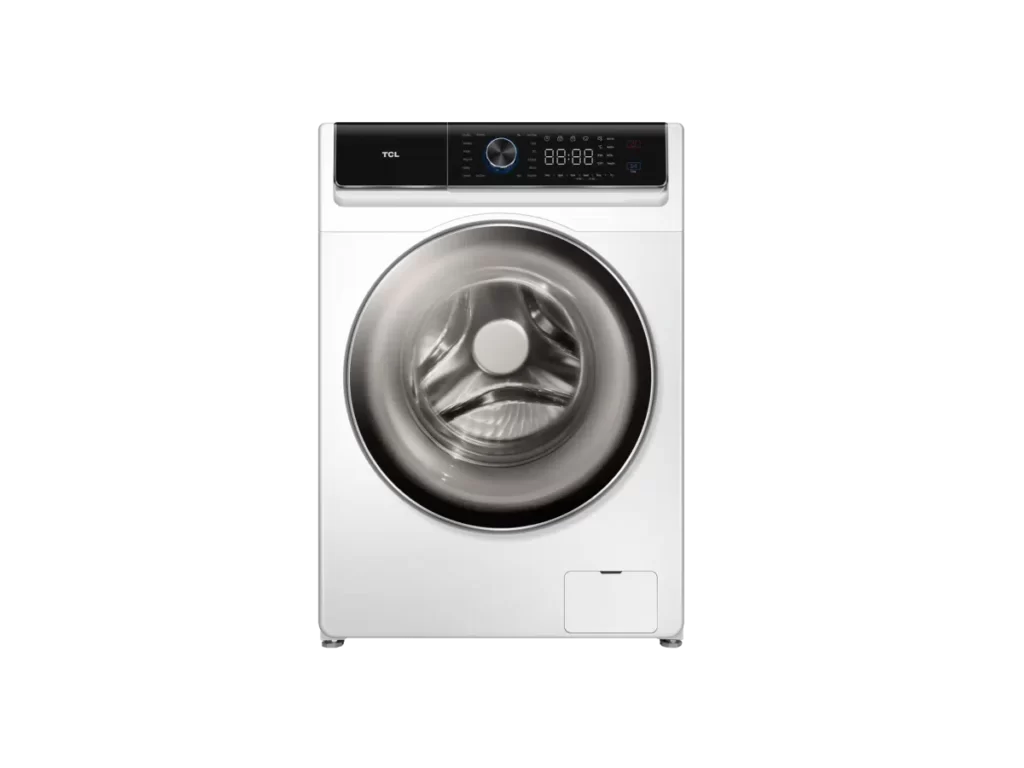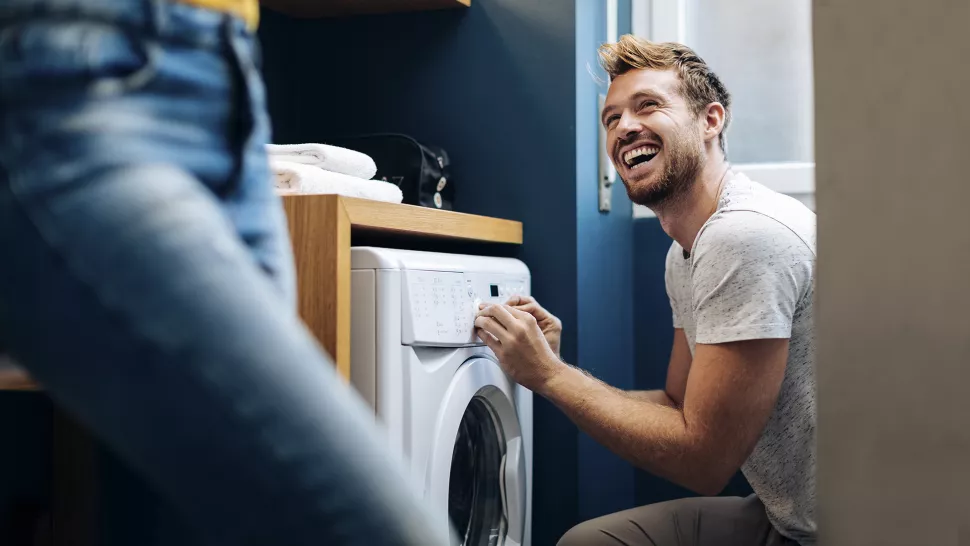Last updated on January 17th, 2025 at 07:05 pm
Maintaining clean, fresh clothing requires selecting the ideal washing machine. It might be difficult to decide when there are so many options on the market. You can choose the ideal washing machine for your needs using the advice in this article.
We’ll give you useful information to assist you in making an informed decision, from determining your laundry requirements to comprehending the many types of machines and crucial characteristics to take into account.
Recognizing Your Washing Machine Needs

Photo Source: tasteofhome
Identifying Your Needs for Laundry
It’s important to evaluate your laundry demands before making a washing machine purchase. Think about things like the size of your home, how often you wash, and the typical load size.
How to Calculate Your Washing Machine Capacity Needs
It’s critical to know the washing machine’s capacity to make sure it can handle your laundry needs. While a lesser capacity might be adequate for one person or a small family, a higher capacity is suited for larger families or homes with heavy laundry loads.
Taking Frequency and Load Size Into Account
A washing machine with a higher load capacity will save you time and energy if you routinely wash heavy loads. A machine with a smaller capacity, however, can be more appropriate if you do laundry less frequently or have fewer loads.
Recognizing Unique Features and Functions
A rapid wash cycle, a setting for delicate fabrics, or steam cleaning choices are just a few examples of any particular features or capabilities you could need. Finding these features will help you focus your search and make sure your computer fulfills your unique requirements.
Examining the Various Washing Machine Types

Photo Source: biccamera
Stackable washing machines:
When it comes to washing machines, stackable options are highly advantageous due to their simplicity, affordability, and ease of use. Top-loading washing machines, in particular, are favored for their wide range of capacities and features, making them a practical choice.
Additionally, they are equipped with a convenient lid positioned on top, ensuring easy access during laundry tasks. Choose stackable washing machines for a cost-effective and versatile laundry solution that caters to your specific needs.
Top-Loading Washers: Pros and Cons
Top-loading washers are practical and let you add clothing while the wash cycle is still running. Additionally, they require less upkeep and are typically cheaper. In contrast to front-loading washers, they consume more energy and water.
Important Factors to Take into Account When Choosing a Top-Load Washer
Think about things like capacity, energy effectiveness, noise levels, and available options when selecting a top-loading washer. To reduce your influence on the environment, look for models with adjustable water levels and energy-saving features.
Machines That Load From The Front
It is well known that front-loading washers offer higher cleaning results and are more energy-efficient. They are stackable and have a front door, making them perfect for tiny settings.
Front-loading washers: Advantages and Drawbacks
Washing machines that load from the front save electricity, use less water, and produce better cleaning outcomes. Additionally, they spin at higher rates, which leads to quicker drying times. However, they are frequently more expensive, and loading and unloading them could involve bending over.
Key Factors to Take into Account When Choosing a Front-Loading Washer

Photo Source: tcl
When choosing a front-loading washer, take into account the capacity, energy efficiency rating, noise levels, and available options. Look for machines with cutting-edge features like allergy removal, steam cleaning, and adjustable wash cycles.
Washer-dryer combos
Combination washer-dryers save space by combining the drying and washing processes into one appliance. They are perfect for small apartments or houses without separate washing rooms.
The benefits and drawbacks of washer-dryer combos
Combination washer-dryers conserve space and do away with the requirement for a separate dryer. They offer adaptability and are practical for small families. In contrast to freestanding dryers, they could have a lower load capacity and take longer to dry clothes.
Important Factors to Keep in Mind When Choosing a Washer-Dryer Combo
Consider the capacity for both washing and drying, energy efficiency ratings, drying performance, and possible wash and dry cycles when choosing a washer-dryer combo. To suit your unique demands, look for machines featuring sensor drying technology and a range of settings.
What to Look for in a Washing Machine’s Essential Features

Photo Credit: whirlpool
Drum Size and Capacity
The maximum amount of laundry that a washing machine can hold in a single load is referred to as its capacity. Knowing your washing needs will help you choose the right capacity. A larger drum can fit bulkier stuff like blankets and comforters, so keep that in mind as well.
Recognizing Capacity Metrics
Usually, the capacity of a washing machine is expressed in pounds or kilos. A typical rule of thumb is that a capacity of 4 to 4.5 cubic feet is appropriate for a family of four, while a capacity of 5 cubic feet or above is preferable for bigger families or houses.
Choosing the Proper Drum Size for Your Laundry
Consider the size of the drum, especially if you routinely wash bulky things. A bigger drum provides for better movement of the laundry throughout the wash cycle, which improves cleaning effectiveness.
Water Use and Energy Efficiency
A washing machine that is energy-efficient is advantageous for the environment and your utility costs. Be on the lookout for devices with high ENERGY STAR ratings for energy efficiency. Additionally, think about the machine’s water usage and choose models with water-saving capabilities.
Assessing Energy Efficiency Ratings
Ratings for energy efficiency show how much energy a washing machine uses while in use. Higher-rated machines are preferable because they use less energy and help you leave a smaller carbon impact.
Use and Conservation of Water
Washing machines that are water-efficient consume less water during each cycle, which saves this important resource and lowers your water costs. Search for equipment with programmable water levels and functions like load detection, which modifies water usage based on the size of the load.
Drying effectiveness and spin speed
Your garments’ drying time in a washing machine is influenced by the spin speed. Greater water extraction from the laundry at higher spin speeds leads to quicker drying times and possible energy savings.
Spin speed’s significance
Better moisture extraction is made possible by spinning at a higher speed, which shortens the drying time for clothing. In order to meet various fabric kinds and drying requirements, look for machines with adjustable spin speeds.
Moisture Extraction and Drying Effectiveness
If you choose a washer-dryer combo, take the machine’s drying performance into account. Select models with attributes like moisture sensors, which modify the drying time depending on the amount of moisture in the clothing. This guarantees effective drying while guarding against over-drying and potential harm to your clothing.
Long-Term Durability and Reliability Influencing Factors

Photo Source: service
Material and Build Quality
The washing machine’s long-term durability is greatly influenced by the materials and build quality employed in its creation. Look for equipment built of durable materials that can survive repeated usage and are corrosion-resistant.
Assessing Construction Materials
Stainless steel or porcelain-coated drums are more robust and resistant to chipping or corrosion, so look for them in equipment. The control panel and outer casing should be strong and well-built, so pay attention to their quality as well.
Strength and Construction
Examine the washing machine’s general architecture, taking close attention to the hinges, detergent dispensers, and other moving parts. Make sure they are well-built and durable enough to sustain frequent use without breaking down.
Warranty and Brand Reputation
When buying a washing machine, it’s crucial to take the brand’s reputation into account. Choose companies with a reputation for dependability, client happiness, and after-sales support. Quality appliances are frequently produced by well-known companies.
Investigating Brand Reputation
Examine consumer feedback and ratings to determine the dependability of various brands. Consumer websites and online forums can offer insightful information about other users’ experiences. Additionally, see if the company provides a thorough warranty and dependable customer service.
Knowledge of Warranty Conditions and Coverage
When purchasing a washing machine, a guarantee is a crucial factor to take into account. It offers assurance and defense against any flaws or failures in the production process. Make sure the warranty fulfills your expectations by understanding its details, especially its duration, and coverage.
Affordability and Value for Money

Photo Source: toptenreviews
Setting a Budget for a Washing Machine
Determine your budget for a washing machine before you begin your search. You can focus on machines that are within your price range by reducing your alternatives and keeping your budget in mind.
Juggling Features and Prices
While it may be tempting to choose the cheapest washing machine on the market, it’s crucial to balance price and features. Think about the key features you need, then distribute your funds appropriately. It’s occasionally possible to save money over the long run and have a better overall washing experience by making a small upfront investment.
Evaluating Return on Investment and Long-Term Savings
Consider the future savings and return on investment in addition to the purchase price. Although they may cost more upfront, energy-efficient appliances can drastically lower your energy costs over time. Similarly to this, strong and dependable equipment can help you avoid costly future repairs and replacements.
Tips for Cleaning and Maintaining Your Washing Machine

Photo Source: tolkar
Removing and Keeping Mildew and Mold at Bay
To avoid the growth of mold and mildew, which can impair performance and produce unpleasant aromas, regularly clean your washing machine. Clean the drum, the detergent dispenser, and other components, according to the manufacturer’s cleaning instructions. Use cleaning products for washing machines that are intended to remove residue and get rid of odors.
Appropriate Dosage and Use of Detergent
For each load, use the correct amount of detergent to prevent overly strong suds and residue buildup. Poor washing outcomes and poor machine performance might arise from using too much detergent. According to the load size and degree of dirtiness, adjust the dosage of the detergent as directed on the detergent’s container.
Continual Upkeep and Service
To maintain the best performance and longevity, schedule routine maintenance inspections for your washing machine. This includes examining the filter, checking the hoses for leaks, and listening out for any odd noises or vibrations while the machine is running. If you experience any problems, get in touch with a qualified specialist who can identify and fix the issue.
Answers to Frequently Asked Questions
1. What size washing machine should a family of four have?
For a family of four, a washing machine with a capacity of 4 to 4.5 cubic feet is appropriate. This capacity enables bigger loads and can meet a medium-sized family’s laundry requirements.
2. Does water usage differ between front- and top-loading washers?
Yes, in comparison to top-loading machines, front-loading washers typically consume less water. By submerging garments in less water, their design enables them to use water more effectively.
3. Can a dryer be stacked on top of a washer-dryer set?
A dryer can typically be stacked on top of a washer-dryer combination. Before attempting to stack the appliances, it is crucial to confirm their compatibility and the manufacturer’s criteria.
4. How frequently should I clean my washer?
Depending on how frequently you use your washing machine and how hard the water in your area is, it is advised that you clean it every one to three months. Regular cleaning ensures optimal performance and deters odors by removing detergent residues, grime, and mildew.
5. How long does a washing machine typically last?
A washing machine’s typical lifespan might change depending on factors like usage, maintenance, and build quality. A well-maintained washing machine can typically last between 8 and 12 years. With the right maintenance, certain devices can survive even longer.
Conclusion
Assessing your laundry requirements, looking into various machine types, and taking into account key characteristics are all steps in selecting the ideal washing machine. Making an informed choice requires consideration of your capacity needs, energy efficiency, and long-term durability.
You can select a washing machine that satisfies your needs while offering value for money by balancing your budget and desired features. To maintain your machine operating efficiently, bear in mind to follow proper maintenance and care procedures. You can easily have clean, fresh laundry with the correct washing machine.




